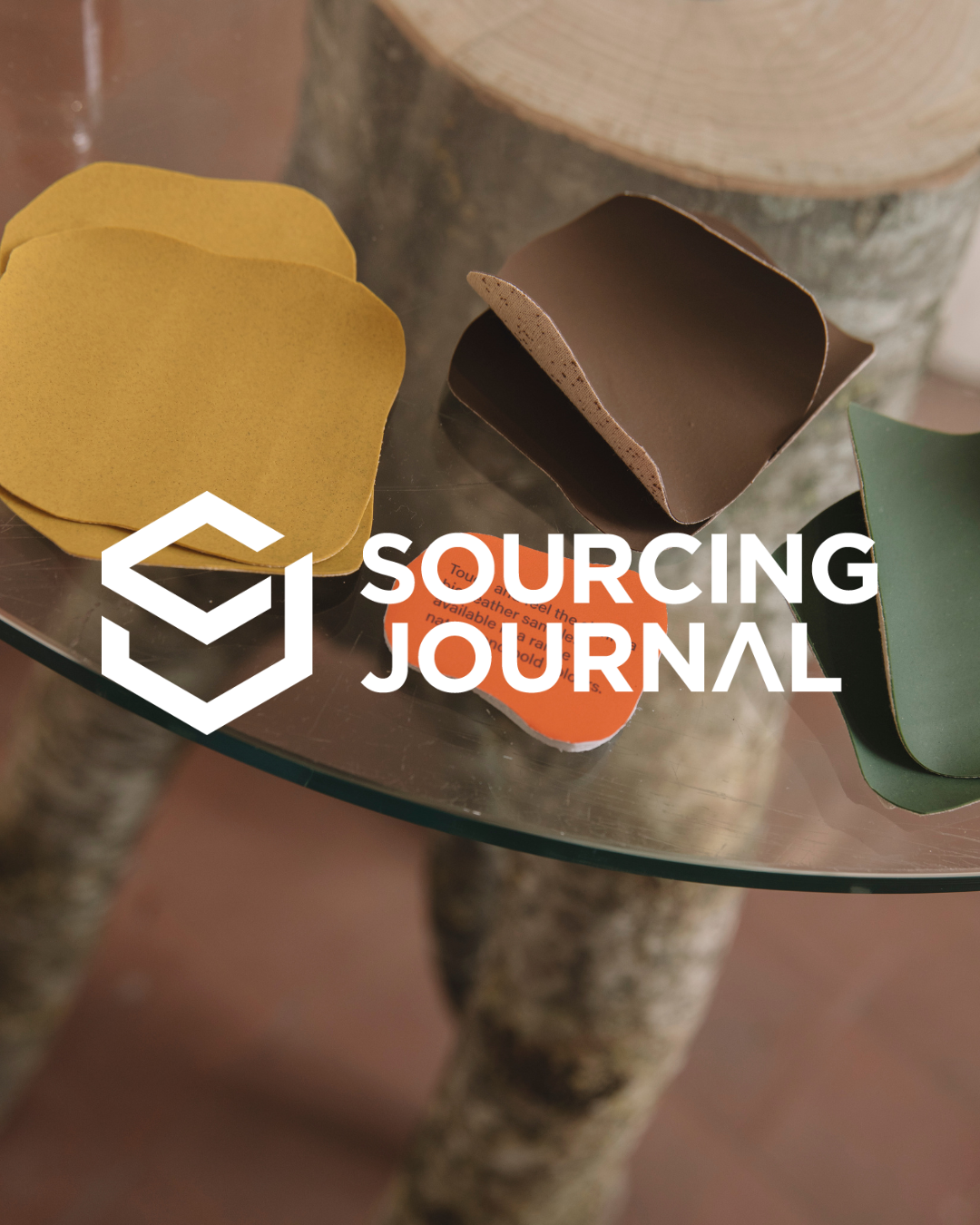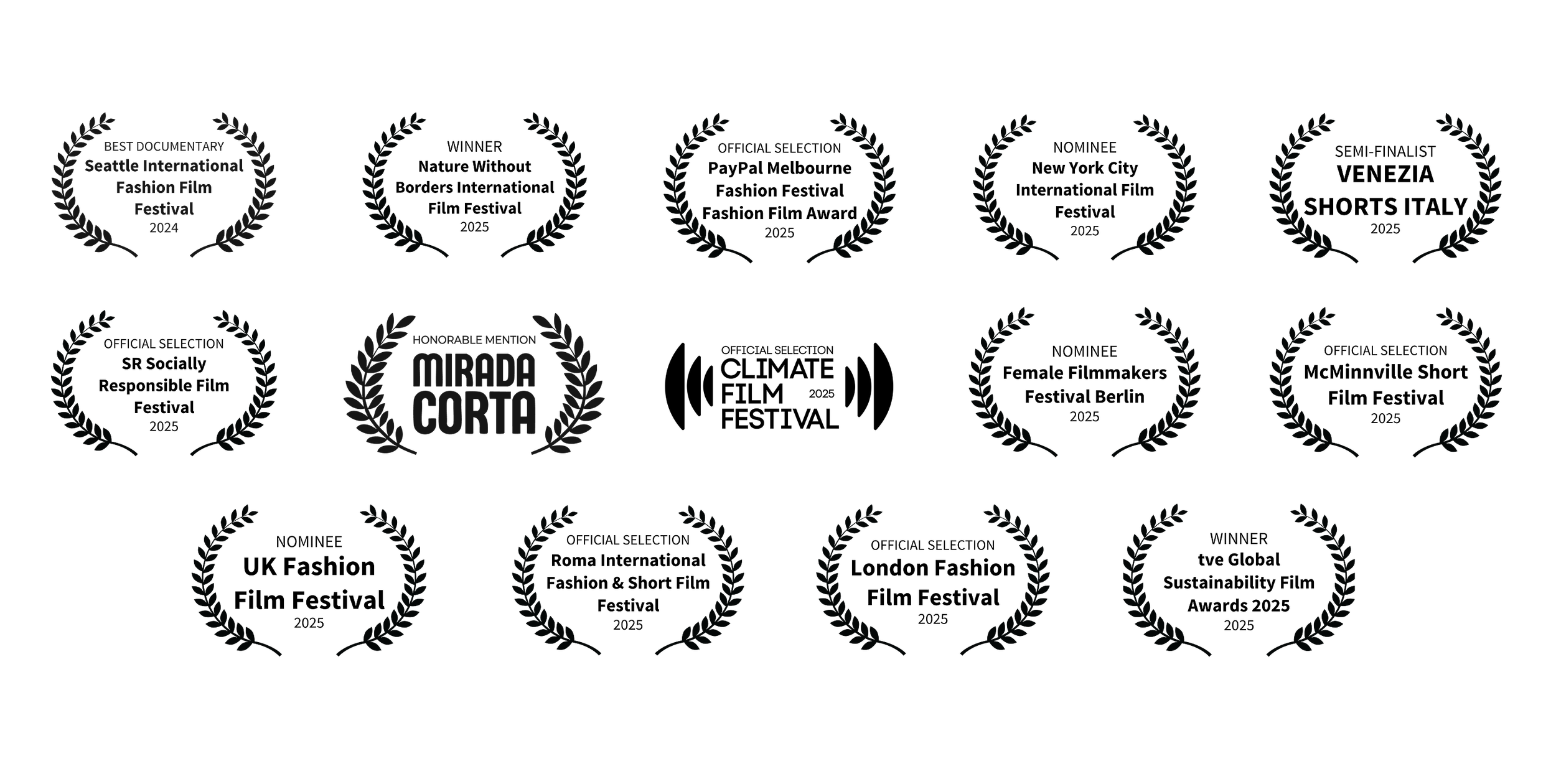The first film from the Total Ethics Fashion Future series:
SHIRINGA
A creative, cinematic exploration of a solution that can move fashion beyond outdated animal-derived and fossil fuel-based leather.
This time, made in the Peruvian Amazon from regeneratively collected tree sap.
Shiringa bio-leather is moving fashion towards creativity aligned with nature.
Learn more about the material’s qualities, benefits and production in our in-depth resource.
For industry: source shiringa bio-leather
Shiringa bio-leather is an ethical and sustainable material solution to the harms of animal-derived and fossil fuel-based materials. Its production benefits Indigenous communities, deforestation prevention, animals and our shared planet.
You can contact Caxacori Studio directly, or we invite you to allow us to introduce you (this allows us to tailor your connection, and include you in opportunities tied to our campaigning, events and press for SHIRINGA).
For citizens: encourage brands and designers to use shiringa bio-leather
If you’re a citizen consumer who wants to see more shiringa bio-leather use in fashion, we encourage you to contact your favourite brands to let them know. Send them our film or this page!
You can learn more about how to get in touch with brands you want to see make positive changes in our article about questions to ask brands before buying from them, below.
See shiringa bio-leather creations from designers
Explore the look book from our CPHFW event featuring Marimekko, Aeron, ASK Scandinavia, Mozhdeh Matin and Serena Coelho.
SHIRINGA in the media
-

Forbes: the Amazon's shiringa bio-leather celebrated at Copenhagen Fashion Week
This article offers a deeper look into how shiringa is reshaping fashion’s material landscape, as covered during CFJ’s exhibition at CPHFW. Through designer reflections, industry insights, and the voices of the Awajún community, the piece explores shiringa not only as a material innovation but as a regenerative model that centres ethics, ecology, and Indigenous knowledge.
It captures the spirit of our short film, SHIRINGA and exhibition—highlighting the collaborative process behind each garment, the cultural significance of the material, and how necessary it is to move beyond extractive systems in fashion.
-

The United Nations International Fund for Agricultural Development promotes shiringa bio-leather
The UN IFAD podcast, ‘Farms. Food. Future.’ spoke to our founder Emma Hakansson (SHIRINGA’s director), as well as shiringa bio-leather’s maker, Caxacori Studio’s founder Jorge Cajacuri, as well as the Awajún women from our short film.
In this episode, Rosalia and Doris from the film speak about their connection to nature, Jorge talks about the value this material offers communities, and Emma talks about the need for investment. -

Vogue Italia: shiringa's revolution at Copenhagen Fashion Week: from the heart of the Amazon, a lesson for future fashion
Fashion writer and editor Giorgia Feroldi moderated the panel at CPHFW Creative Hub exhibition, Shiringa by Collective Fashion Justice, and captured the conversation in a dedicated feature for Vogue Italia.
The article explores the urgent conversation sparked by our short film SHIRINGA, while highlighting the tangible beauty of the material itself —brought to life through the thoughtful, regenerative creations of the designers we collaborated with for the exhibition.
-

BBC's Woman's Hour on Radio 4
Our founder and director of the film Shringa joined Woman’s Hour to discuss the importance of regenerative, animal-free materials in fashion.
The conversation also included discussion of total ethics fashion and Emma’s personal reflections — from being dropped by her modelling agency for refusing unethical fashion to becoming an advocate for systemic change.
-

Sourcing Journal: Fashion Regenerating Amazonia on Display at CPHFW Creative Hub
This article highlights our showcase at CPHFW’s Creative Hub as a catalyst for industry-wide reflection. It explores how shiringa bio-leather—made through regenerative collaboration with the Awajún community and Caxacori Studio—is not only an ecological innovation, but a social one.
The article details how the exhibition, short film and accompanying panel underscores a growing shift in fashion’s priorities: where materials are no longer an afterthought but the starting point to inform and guide design.
-

Vogue Business: storytelling for climate
Sustainability editor Bella Webb interviewed our founding director about creating SHIRINGA. Emma talks about the purpose of the film as well as how creative direction and cinematography support the impact of message being communicated.
The story also speaks to other storytellers aiming to make people care about the planet we share and our impact on it.
-

Sourcing Journal: This latex-based leather alternative fights deforestation in the Amazon
Jasmin Malik Chua writes about shiringa bio-leather, the importance of regenerative materials, and scaling animal-free materials that benefit communities.
This story includes quotes from our founder (also the film director) and Caxacori Studio’s founder, Jorge Cajacuri.
-

BBC's People Fixing the World Podcast
This World Service podcast ran a 23 minute episode about ‘the power of native knowledge’, interviewing our founder and including audio from her trip to Amazonia meeting the Awajún community who make shiringa bio-leather.
The podcast team also included shiringa bio-leather as one of their ‘favourite solutions’ of 2024, in their year-end episode. -

Good On You: Meet the Indigenous community offering fashion an alternative to leather
Sharing new quotes and insights from Indigenous Awajún women, in this article our founder Emma Håkansson writes, in first-person, about the importance of shiringa bio-leather production to Awajún community, land and culture.
The piece highlights how this Indigenous-led and regenerative material innovation offers fashion a powerful, ethical alternative to animal-derived leather.
-

Shiringa bio-leather on Fashion Declares!
Writing for the powerful industry movement for responsible change, Fashion Declares, our founder and SHIRINGA’s director shares her firsthand experience with the Awajún community in the Peruvian Amazon, where shiringa bio-leather is made through regenerative practices.
The piece explores how this collaboration challenges fashion’s extractive systems and offers a path toward a truly ethical, community-led future for materials.
Keep learning about why we need new materials in fashion to replace leather
-

Under their skin: a report series on the injustices of leather
Our report series explores the impact of leather production on people, our fellow animals and the planet in-depth, while outlining the potential for a just transition beyond leather.
-

Fabricating the truth: leather industry greenwashing
Our report uncovering a social media-led disinformation campaign by the leather industry, mirrored by industry lobbying against regulation and political reform towards sustainable and ethical fashion
-

An overview of animal-derived leather harms
Here’s what you should know about how animal-derived leather production harms people, our fellow animals and the planet — if you just want a summary, rather than a full report of insights about the issues.
-

An overview of the issues with fossil fuel alternatives to leather
While a move beyond animal-derived leather is essential, this cannot result in a shift towards plastic materials made from fossil fuels, such as PVC or polyurethane. This page overviews the importance of a shift to bio-materials, not fossil fuels.
-

How does the fashion industry harm Indigenous communities and their land rights?
Our film highlights how animal-derived leather production in the Amazon Rainforest results in deforestation, in turn violating Indigenous communities of their right to their native land, and to live free from violence that comes with land grabbing. But the fashion industry harms Indigenous communities in other ways, too.
-

A list of other next-generation alternatives to animal-derived leather and synthetics
The future of leather is made through a range of different bio-material solutions, of which shiringa bio-leather is an important one. Here you can learn about the other materials we encourage brands to consider.
Stay up to date with how we are bringing shiringa bio-leather to the fashion world:
Launching the film is just the beginning. We plan to bring the film and exhibitions of garments made from shiringa bio-leather to global fashion events, and to link Caxacori Studio to brands that can begin trialling and producing garments available to the public.
Those signed up for our newsletter will hear about these updates first.







